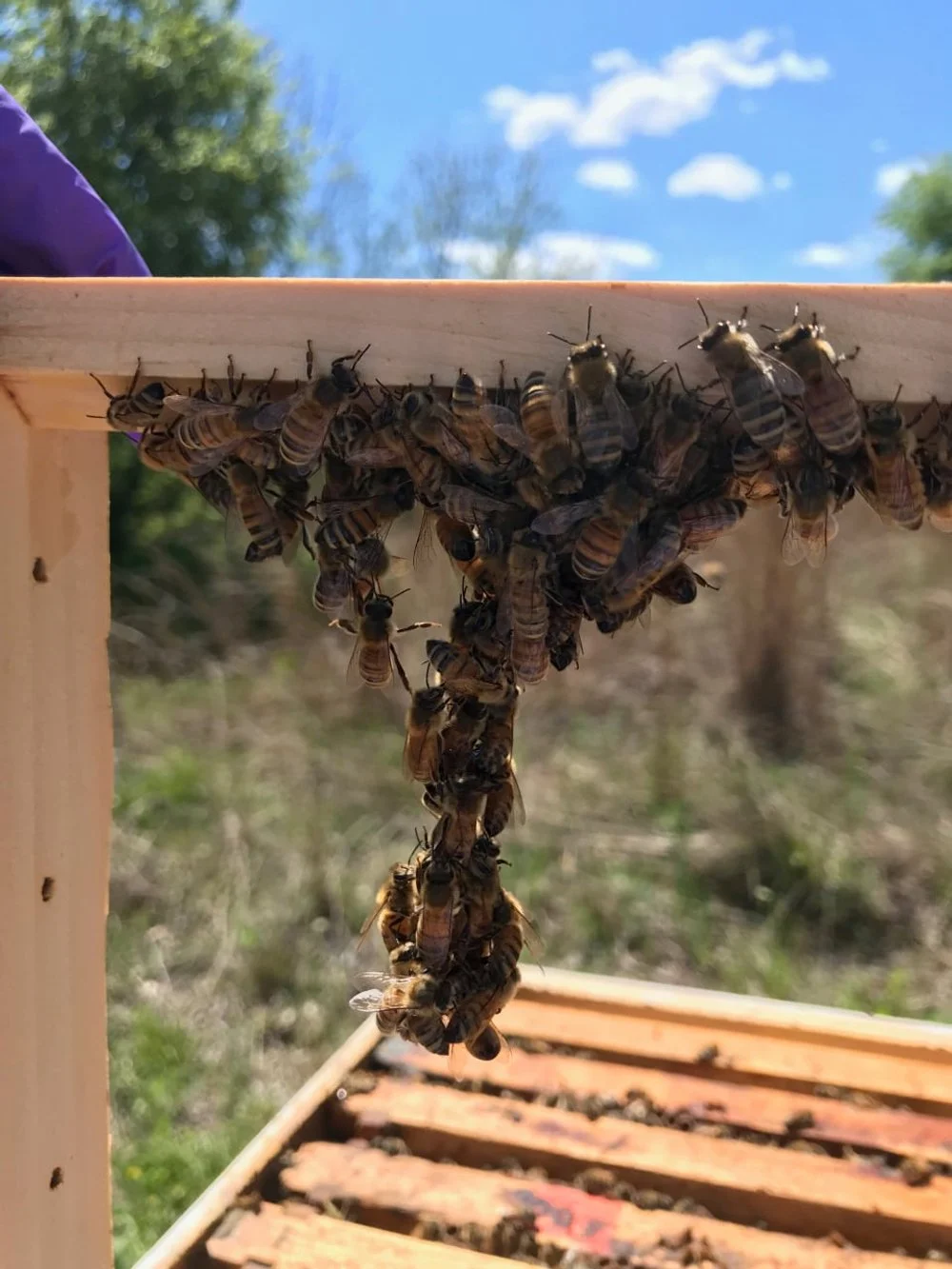She Works Hard for the Honey Money: The Career Path of a Worker Bee By Beekeeper & Expert Alysa Quitoriano
She Works Hard for the Honey Money: The Career Path of a Worker Bee
By Alysa Quitoriano
Career Day was one of the highlights of my elementary school days. The anticipation would build on the way to school and finally culminate in heart exploding joy as the welcoming rainbow balloon arch came into view, signaling far and wide, the fun planned for the day. It was filled with performances from the martial arts group, special snacks from local bakers, and interruption of our daily curriculum for the speakers going from room to room. It was a day filled with hope and excitement, brimming with opportunities to become whomever our heart desired. Imprinting on our impressionable minds that whatever we wanted was ours for the taking.
This little scene is similar to everybody's favorite honey bee movie, you guessed it, “Bee Movie.” In their career day scene, Barry and Adam just graduated from college and are touring Honex, learning about the careers that make it possible for a hive to be successful, because according to their tour guide, “most bee jobs are small ones, but bees know every small job, if it’s done well, means a lot.” After the tour, they pull up to the job placement board for their first day on the job, where they are affectionately referred to as “newbees.” With the ticker rapidly moving showing available positions - pollen counting, stunt bee, front desk, hair removal, swatting counselor, stripe supervisor, regurgitating, crud picker, Krelman, restroom attendant, wax monkey, mite wrangler - they must choose just ONE job to stay in for the rest of their life.
While this scene rings true in many aspects, one note worth mentioning is, while the Bee Movie had a male main character, in reality, the female worker bees are the ones on the career path and hers is much more linear. She will wear many hats during her lifetime, all pertaining to the success and functionality of the hive.
Her career path starts as a cleaner bee. Beehives are some of the most naturally sterile environments and it’s all thanks to these baby bees. As soon as she hatches, she cleans her cell and those surrounding her, preparing them for the next egg or stores of pollen or nectar.
Then she becomes a nurse bee, feeding and caring for larva and young male drone bees. She will visit each cell about 1300x a day!
Next she becomes a queen attendant, feeding, grooming, and cleaning up after her. They also help spread her unique pheromone, signaling the colony she is alive and well.
Her next job is pollen and nectar collector, she starts doing some heavy lifting here, off loading the hauls or resources from returning foragers and depositing it in designated cells. She will also start the process of turning nectar into honey!
She will then move on to becoming an air conditioner. Temperature and humidity control within the hive is key. She will disconnect her wings from her flying muscles and rapidly fan her wings to increase air flow and decrease humidity. Her fanning also helps turn nectar into honey by decreasing the water content down to about 17%.
And now on to a wax maker - the sculptor of the hive. The glands in her abdomen are now fully developed enough to produce wax. They will chew the wax until it’s the right consistency to build comb and seal cells.
Next up, she becomes a guard, patrolling the entrance of the hive and protecting it from unwanted visitors. She is able to detect these bandits by their pheromones, as all the bees in her hive have the same pheromone. If she detects an intruder, she will fight and sometimes to the death. She doesn’t want to use her stinger, but will for the protection of the hive and it always means certain death.
She will then spend her final weeks as a forager. Before leaving the hive, she will take an orientation flight, flying figure 8s around the entrance, memorizing the exact location of her home. When she is ready, she will venture out to gather resources - often visiting about 100 flowers per a trip and often flying several miles to find the best food source.
This little miraculous creature will only live a short four to six weeks in the height of the warm season. She will successfully complete each one of these jobs before moving onto the next, allowing the needs of the hive to dictate the length of her current position. The Bee Movie heartwarmingly put their lifespan best they “went through three days of grade school, three days of high school, 3 days of college, oh! And we can’t forget Barry took off a day in the middle to hitchhike around the hive.”
About Alysa Quitoriano
Alysa began her foray into beekeeping 5 years ago in Oklahoma and has since expanded her apiary to the south bay of Los Angeles. What started as a hobby quickly turned into a passion to teach, mentor, and share her knowledge around bee focused beekeeping. Alysa is an elected official of the Texoma Beekeepers Association and facilitates the club's beekeeping courses. She manages hives and mentors beekeepers around the south bay of Los Angeles and is currently enrolled in Cornell University's Master Beekeeping Program. You can follow along with her beekeeping adventures on instagram @sunny.13ee







